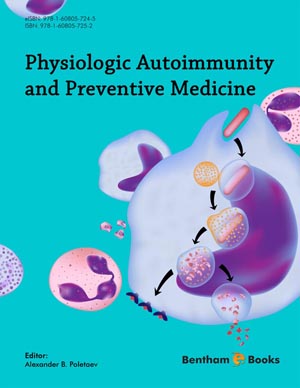Abstract
The immune system is a natural component of and direct participant in the physiological activity of healthy organisms. The main forms of physiological activity of the immune system are based on the intrinsic abilities of self-identification, selfmaintenance, self-regulation, and self-reparation – that is, on recognizing components of the “self”, i.e., natural autoimmunity. The most ancient and homeostatically important function of natural autoimmunity is autoclearance. A multitude of immune functions, including those related to antimicrobial defense, derived from the basic function of autoclearance. Pathological processes of any kind in any organ are usually accompanied by apoptosis/necrosis of the resident cells and, accordingly, by increased extracellular concentration of intracellular components. These events induce the secondary rise in production of autoantibodies with appropriate specificity (opsonines), which provides augmentation of clearance by facilitating the efficacy of macrophagedependent consumption of debris in the affected organ. This phenomenon is sanogenic in nature and adaptive in essence. Therefore, secondary changes in production and serum content of tissue-specific autoantibodies can be considered the universal and earliest detectable marker of any chronic disease.
Keywords: The Immune System, immunophysiology, innate immunity, adaptive immunity, natural autoimmunity, autoantibodies, immune autoclearance.






















